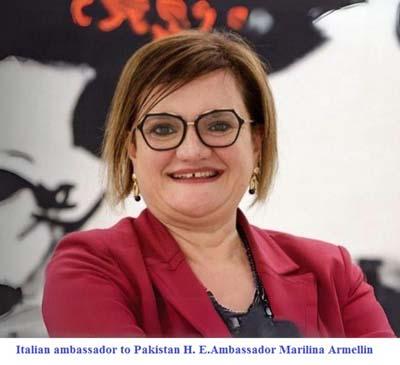
Italy: Forgotten tragedy captures the pernicious politics of memory
Rome: This week there was a day of commemoration here in Italy, recalling a cluster of events from the era of the Second World War and its immediate aftermath.
In principle, there’s nothing remarkable about that – Italy has seen so much history over more than 3,000 years that you probably could find something to observe every day of the year, and without breaking a sweat.

Yet the February 10 “Day of Remembrance” is nonetheless worth pondering because of the poignant way it captures the politics of memory – the hard truth that some people’s suffering and heroism is emphasized more than others in our collective imagination, not because of any difference in moral quality or gravity, but due to crass political calculations.
That’s true of the wider world, and, alas, it can also be true at times of the Catholic Church.

In brief, the Giorno del Ricordo, or “Day of Remembrance,” is an annual observance in Italy recalling events on the Istrian Peninsula, meaning the border zone among Italy, Slovenia and Croatia, during and after World War II, when chunks of territory were sliced away from Italy and seized by what was then Yugoslavia.
Yugoslav forces under Marshall Tito, who came to power in 1943, launched a vicious “Slavicization” campaign in the region, killing somewhere around 12,000 to 15,000 unarmed and defenseless Italian civilians and tossing their bodies into deep mountain chasms known as foibe, while driving at least 350,000 Italians into permanent exile.
Whole cities, such as Pola in Croatia, which had a thriving Italian majority before the war, were essentially “de-Italianized” overnight, in an early form of what would later come to be known as ethnic cleansing.

The hundreds of thousands of people who formed the resulting exodus arrived in an Italy which was itself reeling from the devastation and poverty left behind by the war, and they weren’t exactly welcomed with open arms. Often, they were told they were istriani, non italiani, meaning “Istrians, not Italians,” and treated like foreigners.
Today, many historians regard the treatment those exiles received as a national source of shame.
Another aspect of Tito’s effort to de-Italianize the region was an assault on the Catholic Church, due both to the Marxist ideology of the Yugoslav regime as well as the perception that the Catholic leadership of the area, especially the largely Italian clergy and episcopacy, looked more to Rome than to Belgrade.
Typical of the brutality of the time is the story of Father Angelo Tarticchio, a 36-year-old parish priest who was captured by Yugoslav partisans along with thirty of his parishioners in 1943. He was tortured and eventually executed, with his body tossed into a nearby bauxite cave.
A similar fate befell Father Francesco Bonifacio, who was seized by a group of Tito’s “Popular Guards” in 1946, beaten with a rock and then knifed to death, with his body presumably thrown into a mass grave – “presumably” because his remains were never found. Bonifacio was beatified in 2008.
It’s worth noting that ethnic Italians weren’t the only victims. There’s also, for example, Father Miroslav Bulešic, a Croat priest who was killed by Tito forces for defending the Eucharist during an assault on a church in 1947, and who was beatified in 2013.
In fact, it’s only been since 2004 that Italy formally declared the Giorno del Ricordo, and to this day, many average Italians still don’t know the story.
The first feature film about the foibe and the exodus, called Il Cuore nel Pozzo (“Heart in the Well”) didn’t appear until 2005, when it was broadcast as a two-part miniseries on the national network RAI.
